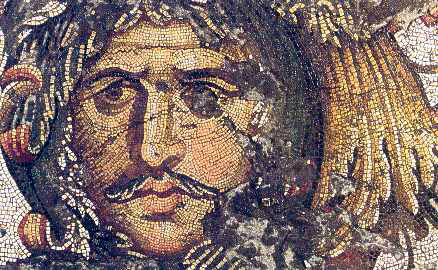|
Theodosius Cistern
The Theodosius Cistern ( el, Κινστέρνα Θεοδοσίου, tr, Şerefiye Sarnıcı) is one of many ancient cisterns of Constantinople that lie beneath the city of Istanbul, Turkey. The modern entrance is in Piyer Loti Caddesi, Fatih. History It was built by Roman Emperor Theodosius II between 428 and 443 to store water supplied by the Valens Aqueduct. The Aqueduct of Valens was redistributed by Theodosius from its original supply to the Nymphaeum, the Baths of Zeuxippus and the Great Palace of Constantinople. This redistribution led to the construction of the Theodosius Cistern. The area is about and the roof is supported by 32 marble columns about high. Like the Basilica Cistern and the Binbirdirek Cistern, it is once again open to the public, having been under restoration for eight years as of April 2018. See also *List of Roman cisterns The list of Roman cisterns offers an overview over Ancient Roman cisterns. Freshwater reservoir were commonly set up ... [...More Info...] [...Related Items...] OR: [Wikipedia] [Google] [Baidu] |
Istanbul
Istanbul ( , ; tr, İstanbul ), formerly known as Constantinople ( grc-gre, Κωνσταντινούπολις; la, Constantinopolis), is the List of largest cities and towns in Turkey, largest city in Turkey, serving as the country's economic, cultural and historic hub. The city straddles the Bosporus strait, lying in both Europe and Asia, and has a population of over 15 million residents, comprising 19% of the population of Turkey. Istanbul is the list of European cities by population within city limits, most populous European city, and the world's List of largest cities, 15th-largest city. The city was founded as Byzantium ( grc-gre, Βυζάντιον, ) in the 7th century BCE by Ancient Greece, Greek settlers from Megara. In 330 CE, the Roman emperor Constantine the Great made it his imperial capital, renaming it first as New Rome ( grc-gre, Νέα Ῥώμη, ; la, Nova Roma) and then as Constantinople () after himself. The city grew in size and influence, eventually becom ... [...More Info...] [...Related Items...] OR: [Wikipedia] [Google] [Baidu] |
Great Palace Of Constantinople
The Great Palace of Constantinople ( el, Μέγα Παλάτιον, ''Méga Palátion''; Latin: ''Palatium Magnum''), also known as the Sacred Palace ( el, Ἱερὸν Παλάτιον, ''Hieròn Palátion''; Latin: ''Sacrum Palatium''), was the large imperial Byzantine palace complex located in the south-eastern end of the peninsula now known as Old Istanbul (formerly Constantinople), in modern Turkey. It served as the main imperial residence of the Eastern Roman or Byzantine emperors until 1081 and was the centre of imperial administration for over 690 years. Only a few remnants and fragments of its foundations have survived into the present day. History When Constantine I refounded Byzantium as Constantinople in 330, he planned out a palace for himself. The palace was located between the Hippodrome and Hagia Sophia. The complex of palaces was rebuilt and expanded several times during its history. Much of the complex was destroyed during the Nika riots of 532 and was reb ... [...More Info...] [...Related Items...] OR: [Wikipedia] [Google] [Baidu] |
